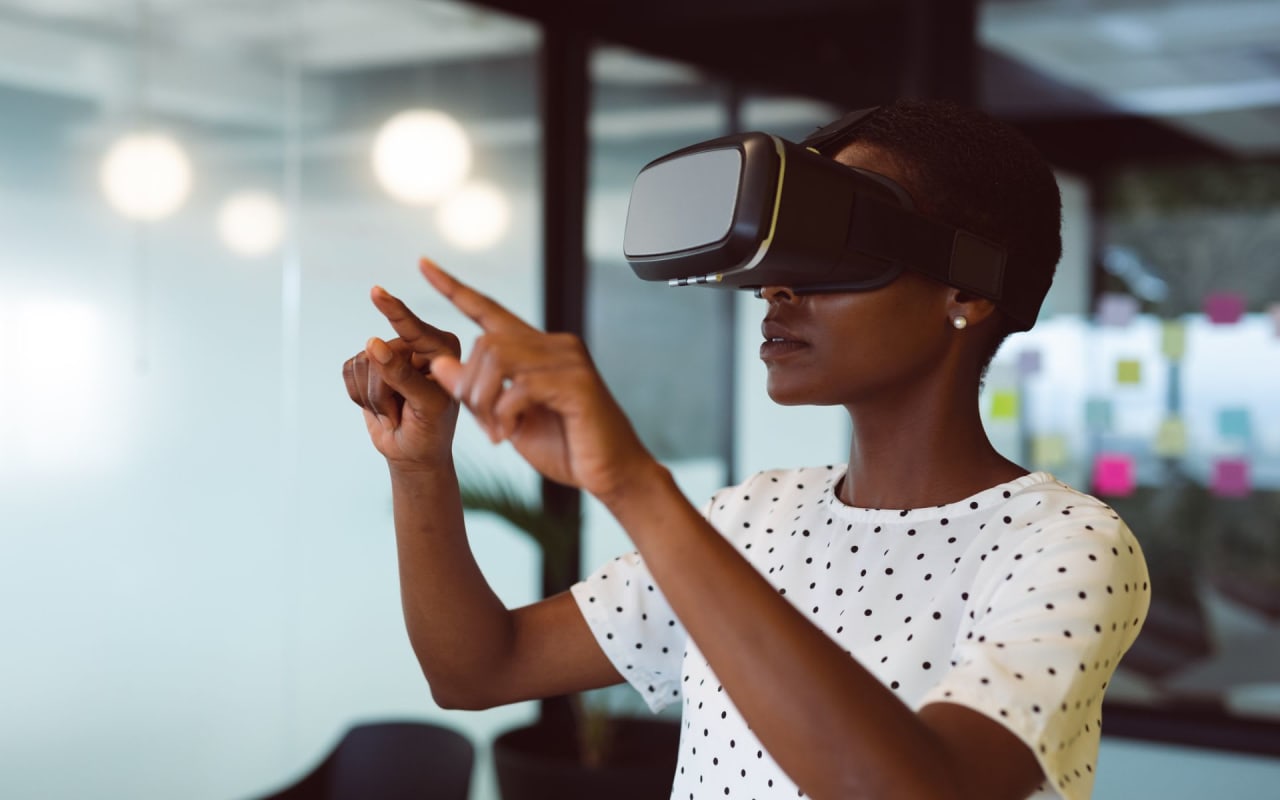Virtual technology has gained traction in the real estate industry, and the recent pandemic has only accelerated its use and widespread adoption. Virtual tours and digital staging are now commonplace, and many consumers have come to expect the use of these features in the buying and selling process. If you’re still getting up to speed on these developments, here’s a rundown of the terms related to virtual reality in real estate:
Virtual Reality Tours – this is a fully immersive, virtual experience where a homebuyer uses a VR headset to explore a home or space. They can look around and walk through every room, opening doors, and examining even the smallest details. This is the next best thing to visiting a property in person. In fact, it could be better, since there are interactive elements that can be added to a VR tour like changing the wall color of a space or digitally enhancing the existing décor.
360-Degree Videos (also known as Guided Visits) – These types of videos are similar to the real estate videos that you’re used to. They are simple to produce, since no programming or sophisticated equipment is needed. You can even create one from your smartphone! But to capture the best version possible, you’ll need to use a panoramic camera that can capture 360-degree videos.
Interactive 3D Tours (also known as 3D Walkthroughs or 3D Virtual Showcases) let users choose where to move within a property by clicking on special hotspots in the field of view. Creating interactive virtual home tours is more complicated, but they’re more interactive than guided 3D virtual tours so you can more efficiently show properties.
Augmented Reality – is different from virtual reality because it allows the user to view an “enhanced” view of the real world. For instance, it could help a buyer visualize what a new sofa would look like in an existing space or how a room would look with a different paint color. This can be accomplished through a smartphone’s camera or video viewer.
Virtual Showings – a low-tech, often live video walkthrough, where the agent is using a video call to physically walk through a property for a buyer.
The Benefits of Using VR Tools in Real Estate
It Saves Time
The way real estate agents have typically handled the home search process with clients was to work with the buyer to vet a list of properties and then find a convenient time to work with all parties to set up a showings. This is a time-consuming process for everyone involved, and even more complicated for buyers who are not local. Virtual technology helps buyers narrow down their list and consequently, reduces the number of showings that must be coordinated.
It’s More Convenient
3D Walkthroughs and Virtual Tours are available 24/7, which means the buyer can visit the property when it’s most convenient for them and spend as much time as they want exploring the space.
It Expands the Pool of Potential Buyers
Virtual tools such as VR and 3D Tours make it easier for buyers anywhere in the world to view a property and get a realistic feeling for the layout and features so that they can imagine their lives in that space. This expands the pool of potential buyers, which can result in a quicker sale.
Helps the Buyer Get a Better Sense of the Space
How many times have you set up a showing for your clients, and they know it’s a no the moment they step foot in the house? This could have been avoided by making use of VR and AR tools. Having a video tour or an interactive 3D walkthrough can help buyers get a truer sense of the space, which might not be apparent in still photos. This technology is also extremely helpful for home builders and developers so that they can provide a realistic view of the planned construction before it’s finished.
Can Make an Empty House Look More Appealing
We all know how important staging is for helping potential buyers visualize their life in a space. But professional staging can get expensive and may take a while to set up. Virtual staging uses photo and video editing software to add furniture and décor to a space – making it more appealing to buyers.
Redwood Agents Have Access to a Number of Virtual Tools to Market Their Listings.
With more and more of the home search and buying process moving to online and digital spaces, it pays to adopt virtual reality technology in your real estate practice earlier rather than later.
The global virtual reality (VR) market size is expected to reach $84.09 billion by 2028 (source), and a significant portion of that growth will be related to real estate.
Redwood Realty offers our agents access to a virtual home selling program that includes:
- A suite of virtual marketing tools such as a property listing website, professional photography, accurate floor plans, and a virtual reality-enabled interactive 3D tour
- An optional property pre-inspection report
- Electronic signatures on contracts using DocuSign
- Controlled inspections that are permitted after the home is under contract
- Remote closings that bring all parties together for the settlement using video and wired funds to complete the transaction.
Contact us to learn more about Redwood.



